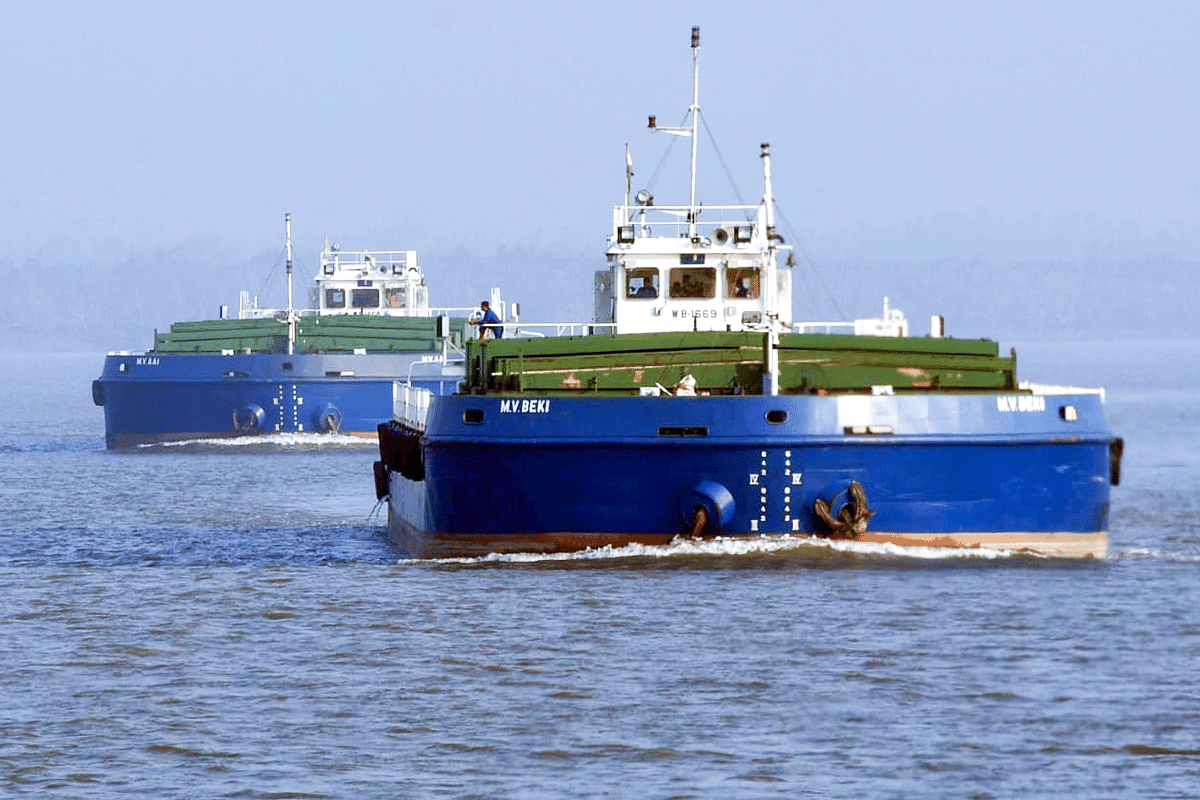News Brief
Inland Vessels Bill 2021 To Streamline Freight Transport Within India's Waterways, Replaces 100-Year-Old Law
- The main feature of the Inland Vessels Bill, 2021 is that it provides a 'uniform regulatory framework' for inland vessel navigation across the country.
- It will replace the Inland Vessels Act,1917 which had now become insufficient and was an impediment.

A vessel
The Inland Vessels Bill, 2021 got approved by the Parliament as it passed muster on the floor of the Rajya Sabha on 2 August last week. Under this bill, provisions have been made to ensure safety, registration, and seamless movement of vessels on inland waterways.
Sarbananda Sonowal, Union Minister for Ports, Shipping and Waterways, said that this law will facilitate inexpensive and safe shipping, as well as assure the safety of both passenger and cargo ships.
It will replace the Inland Vessels Act,1917 which had now become insufficient and was an impediment.
The main feature of the Inland Vessels Bill, 2021 is that it provides a 'uniform regulatory framework' for inland vessel navigation across the country.
The certificate of registration granted under this law would be valid pan-India and would not require any separate permission from the states.
A central database will be maintained for recording vessel registration, crew details and issued certificates. All mechanically-propelled vessels (ships, boats, sailing vessels, container vessels and ferries) must be registered with the Registrar of Inland Vessels.
Construction or modification of such vessels will require prior approval of a designated authority.
The bill broadens the definition of 'inland waters' by including the 'tidal water limits' and the 'national waterways' as declared by the Central government. It directs the Central government to notify the list of prohibited pollutants, and mandates the state governments to issue pollution-check certificates to the inland vessels.
According to a government study conducted by RITES, one litre of fuel moves 24 tonnes-km on road, 95 tonnes-km on rail, and 215 tonnes-km on inland waterways.
To move a tonne of cargo over a kilometre, it takes about Rs 1.36 on railways, Rs 2.50 on highways, and Rs 1.06 on inland waterways, reports The Indian Express.
With the Inland Vessels Bill 2021, the government aims to develop and expand the inland water transport network. The wide network of inland waterways could be a huge boost to India's freight movement, it being economical and environment friendly, vis-a-vis other modes of transport.
In India, there are roughly 14,500 kilometres of navigable waterways, including rivers, canals, backwaters, creeks etc. According to the National Water Act 2016, as many as 111 waterways have been declared as National Waterways (NWs).
About 55 million tonnes of cargo is being transported by the Inland Water Transport (IWT) annually.
The Inland Waterways Authority of India (IWAI), with technical and financial assistance from the World Bank, is undertaking the Jal Marg Vikas Project (JMVP) for capacity augmentation of navigation on the Haldia-Varanasi sector of Ganga.
In addition, the waterways will be linked with the Eastern and Western Dedicated Freight Corridors (DFCs) and the Sagarmala Project.
The Inland Vessels Bill 2021 directs the states to constitute a development fund for emergency preparedness, pollution-check, and boosting inland waters navigation.
The bill, along with other waterways development projects, will facilitate seamless freight movement across the country through waterways.
With this, India can realise the true potential of its under-utilised inland waterways, the movement in which is currently restricted only to Ganga-Bhagirathi-Hooghly, Brahmaputra, Barak, rivers in Goa, the backwaters of Kerala, inland waters in Mumbai and deltaic regions of Godavari-Krishna rivers.
Support Swarajya's 50 Ground Reports Project & Sponsor A Story
Every general election Swarajya does a 50 ground reports project.
Aimed only at serious readers and those who appreciate the nuances of political undercurrents, the project provides a sense of India's electoral landscape. As you know, these reports are produced after considerable investment of travel, time and effort on the ground.
This time too we've kicked off the project in style and have covered over 30 constituencies already. If you're someone who appreciates such work and have enjoyed our coverage please consider sponsoring a ground report for just Rs 2999 to Rs 19,999 - it goes a long way in helping us produce more quality reportage.
You can also back this project by becoming a subscriber for as little as Rs 999 - so do click on this links and choose a plan that suits you and back us.
Click below to contribute.
Latest